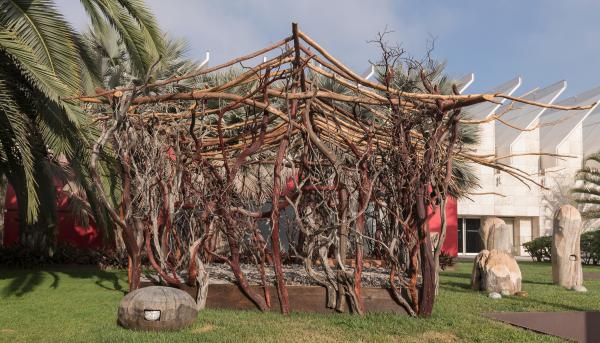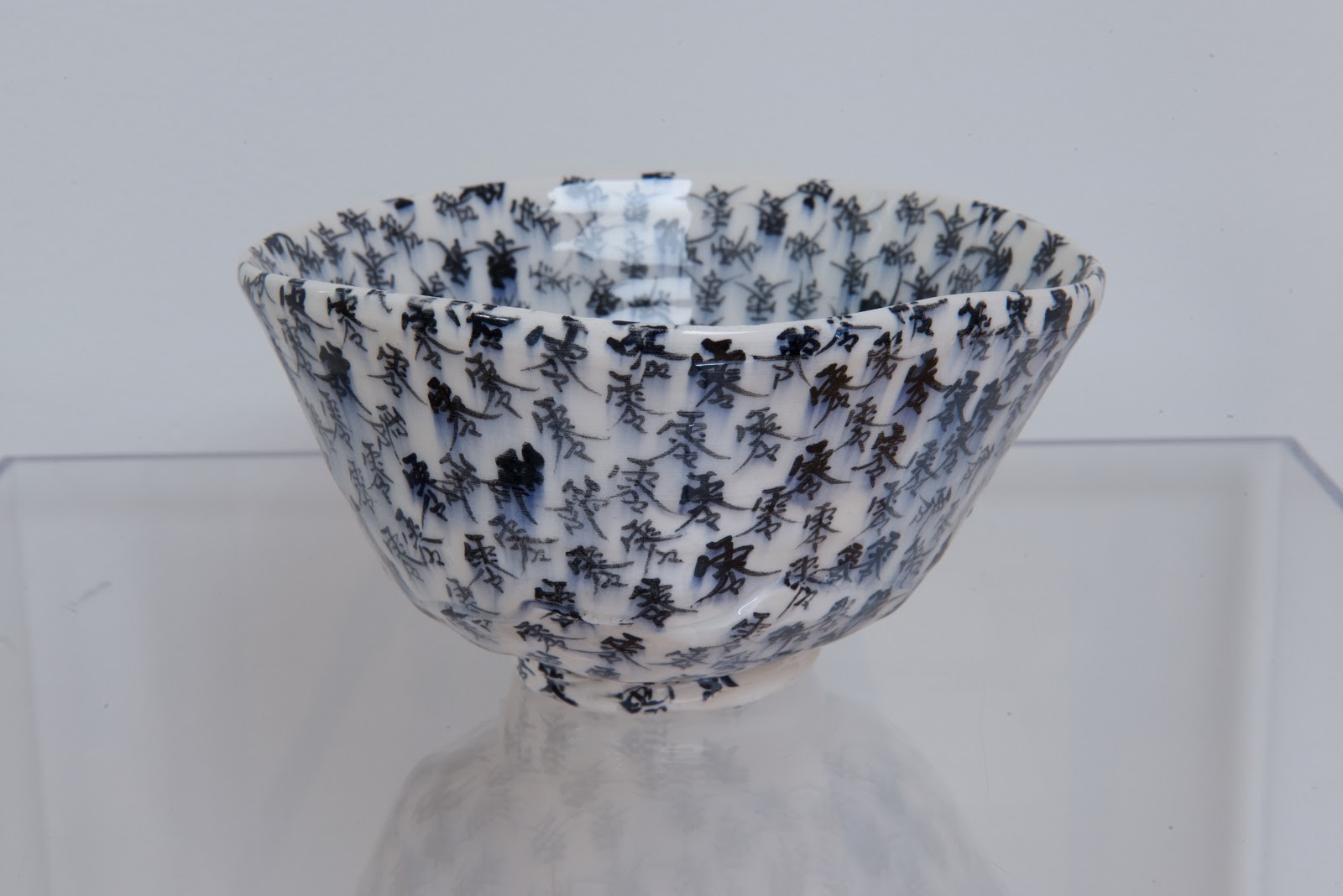In 2016, Mineo Mizuno honored his ongoing position as the artist-in-residence at Fort Mountain Ranch with a tea ceremony. Together with his esteemed guests, including close friends, fellow artists, and a tea master who came specially from Japan, he selected a site in the upper reaches of the Northern California property. There, the group constructed his sculptural structure, Kelly’s Tea House, using manzanita wood from the forest. Settled in among the trees—at least one representative from each of the ranch’s major species—they commenced the traditional Japanese practice.
This momentous occasion brought together two of Mizuno’s preoccupations: the Japanese tea ceremony and communicative properties of nature. Chanoyu (literally translated as “hot water for tea”) is a rigorous discipline of preparing and serving powdered green tea that has evolved over five centuries. An art form in its own right, chanoyu is a total sensory experience, with special attention paid not only to the tea itself, but to the aesthetic qualities of the setting, from the tea house where participants sit on tatami mats to the cherished tea bowls from which they sip. Because of this, the tea ceremony has played an essential role in the development of Japanese ceramics, with many artists dedicated to the perfection of the tea bowl form.
Born in the Gifu Prefecture of Japan, Mizuno moved to Los Angeles in 1964 at the age of 19 and remained for several decades. His studies at Chouinard expanded his understanding of ceramics, and in his earliest work, he explored the ideas of Pop art and Postmodern deconstruction that he encountered in California. Over time, however, he has increasingly reflected on his personal history and Japanese heritage with works in multiple media. Kelly’s Tea House, along with his latest Tea House now installed at LACMA, is an example of this shift in his practice. Though clearly a contemporary artistic interpretation, Mizuno’s tea houses reference aspects of a traditional structure, such as the compact size, rustic asymmetry, and low entrance. As in much of his work, he pushes past the constraints of the functional form, contemplating the significance of its aesthetic qualities.

At the same time, these works incorporate Mizuno’s growing fascination with trees, an interest brought on by his wooded surroundings at Fort Mountain Ranch. He was deeply moved by the work of ecologist Dr. Suzanne Simard, whose research investigates the ways that trees communicate to aid the growth of the forest, sharing nutrients or warning against dangers such as insects. The powerful connectivity of the sylvan environment resonated with his own artistic investigations into the contemplative and emotional qualities of water. He began to integrate wood into his sculptural work, taking inspiration in the forms of fallen trees and the twisted manzanita bushes that are regularly removed to protect against wildfires. In the tea houses, the open form balances the seclusion needed to experience the tea ceremony with the powerful presence of its natural surroundings.


Now, several years into his residency, Mizuno has created both indoor and outdoor interventions in wood and ceramic across the ranch. In his new installation, Harmony, he transplants elements of his idyllic home from the foothills of the Sierra Nevada mountains back to Los Angeles. His tea house is situated on LACMA's Resnick Lawn, where its wild, organic forms contrast with the crisp geometries of Renzo Piano’s pavilion and the lofty spines of Robert Irwin’s Primal Palm Garden. Around the tea house, Mizuno has placed a series of sculptures. Embedded in wood and on the ground, his ceramic water drops and tea bowls are painted with meditative repetitions of Japanese kanji such as yui (connect) and wa (harmony). Visitors can experience the full effect of the composition through November 11.




